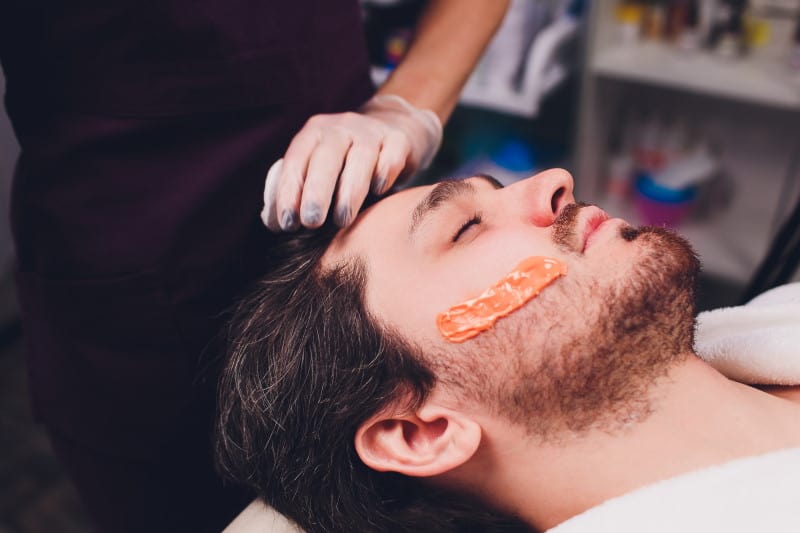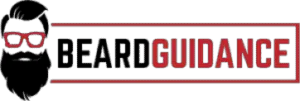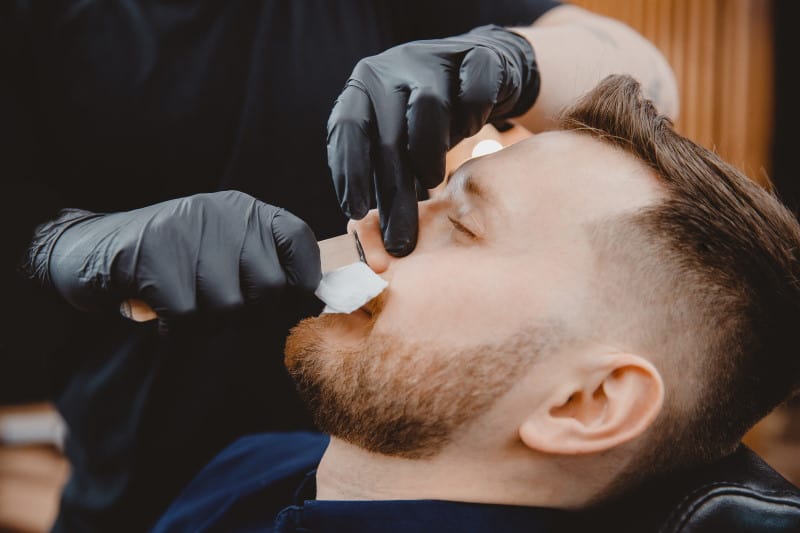Shaving is a pain, most men agree. But it is one of those pains that seems like just another fact of life, like getting older and doing your taxes. It isn’t the only way to remove unwanted facial hair. People get hair waxed off their bodies all the time, so why not a beard?
Could it even be that waxing off a beard is better than shaving?
If your goal is to reduce how often you shave, then waxing is a great choice. Waxing removes facial hair at the root rather than simply cutting it. Without a root for further growth, hair isn’t able to come in as quickly. The body must first form an entirely new hair follicle, and this will take roughly four weeks. In contrast, a shave will be back in a few days. There are a few downsides to waxing, such as the irritation afterwards; but when done properly, and with the right aftercare, waxing a beard off can be a great choice for those who like a clean-shaven look.
Stick around to learn how to wax off a beard, as well as the advantages and disadvantages that it offers. When done properly, this technique can be highly effective, so make sure you follow Beard Guidance’s advice for the best possible experience.
How to Wax a Beard and Why You Should Consider It
Waxing a beard may be a little uncomfortable, but it can save you hours over the course of a year if you’re the type of guy that likes a clean look. This is really the biggest benefit of waxing. If you enjoy shaving or are trying to create a smooth line of definition between your beard and the rest of your face, then you are better off using a razor and shaving yourself. This will give you more control.
Waxing can be a little bit messy. You are using hot wax which is gooey, and it spreads out a little bit when the waxing strip is applied. If you are looking to remove everything, then waxing will be much more appropriate. While we’ll look at how you can wax your facial hair at home by yourself, I want to recommend that you first get it done by a professional, so you can experience how it is done properly.
This isn’t a must, as they do sell waxing kits for home use after all, but I believe the benefits of starting with a professional make it worth your time and money. Once you know how it is done, it’s easier to do it yourself.
Doing it at home isn’t particularly hard, though. We’ll walk through how you can do it yourself, plus you can always check out this video for a visual guideline on how to make it as painless as possible:
Before you can wax your facial hair, there must first be facial hair. This means that you need to let it grow in for at least a week or two first. If you don’t, then there isn’t going to be enough surface for the wax to cling to for a good pull. This also means that when you go to wax your facial hair again, you need to let it grow in a little bit. If you absolutely must have a clean shave at all times, then it might actually be better to stick with shaving.
When your hair is long enough and it is time to wax it, you need to heat up the wax itself. Some waxes are designed and sold in a container which lets you just toss it into a microwave. Others, like the one linked above, come with a wax heating pot specifically for their product. There is such a thing as a cold wax, but it is by far less effective, so you are better off not wasting your time and money on them.
Some waxes will also come with a pre-wax solution. This is a cleaning solution that clears away dead skin and oils that could mess up the waxing application. If your waxing kit doesn’t come with a pre-wax solution, then all you need to do is put a little bit of rubbing alcohol onto a cotton ball or a face cloth and use that.
It will have the same effect and make your waxing experience much easier. Make sure that you thoroughly wash your face with this solution before waxing, but don’t forget to pat it dry afterwards. You don’t want any liquid on your face when you begin to apply the wax.
Because we need to heat up the wax, we can’t just apply it with our hands, or we’d get burnt. This is why wax is applied with a waxing stick or other utensils. When seeing a professional, you want to make sure that they use a new tool for your application.
When you’re waxing at home, you don’t need to be as careful. You’ll want to make sure that your waxing tool is clean and that it hasn’t been used for anything else. If it is metal, then you can clean it and use it again; if it is a popsicle stick or any other wooden product, toss it out after you finish and use a new one the next time you wax.
Stick your tool into the wax and get a good glob of it. When you pull the wax from the container, hold your tool sideways so that any excess or runny wax can drip off back into the container. This helps you to ensure an even spread rather than applying wax in clumps. This should also have the effect of spreading the wax more evenly across the applicator rather than just at the end of it.
Now it’s time to apply the wax to your beard. It is best to start from the lowest part, where your beard meets your neck, and work your way up from there. Only apply wax to a small area at a time. This is done so that there is enough wax to get a good grip on the hair.
Follow the wax by applying a waxing strip. These strips are typically made of muslin and can be bought in a kit or separately. Hold the strip at both ends and use a finger to apply pressure in the middle. Once the middle is stuck, work out from there until the whole strip is stuck on. Then, use one hand to pull the skin around the strip nice and taut.
Time for the fun part. Yank that bad boy off and prepare to grit your teeth in discomfort. You want to make sure that there is as little time as possible between applying the wax and ripping off the strip. The longer there is, the harder the wax will become and the more difficult it will be to remove it. When you yank the strip off, give the motion a slight twist for the best result. If you find it hurts, clamping your hand over the newly waxed area can reduce the pain.
Repeat this process until your entire beard has been waxed off. Then take some olive oil, or a post-wax solution if your kit came with some, and apply it generously. This will remove any wax that is left on your skin. After applying oil, wet a cloth with lukewarm water and hold it to your face for a few minutes. This will help to relieve the pain, as well as clean away any traces of wax or oil.
Waxing isn’t a difficult procedure, but it does take up a fair chunk of time. It is also less effective if you wax immediately after a shower. When you apply wax, you want it to harden a little bit before pulling, but not for too long. After a shower when your skin is still warm, the wax has a harder time hardening and it results in an ineffective waxing session.
Waxing also shouldn’t be considered a fool-proof method of hair removal. Chances are that a few stray hairs will remain, even if you follow every step perfectly. To deal with these, just take a pair of tweezers and pluck them out.
You should only have a few of these remaining hairs; if you have a lot of them, something went wrong with the waxing and you either didn’t give it enough time on your face, didn’t pull hard enough, or you didn’t prepare your skin right. Take a look at what steps you took and see if you can spot the problem.
Does Waxing Hurt?
Yes, waxing hurts. It doesn’t matter if you are waxing your arm, your chest or your beard. It hurts. This is one of the biggest downsides to waxing, unfortunately. You have to wax less often than you shave, but it feels much worse.
When you shave, you are cutting the hairs. The hairs don’t have any feeling in them, so this doesn’t hurt at all. Although if you’ve ever had an electric trimmer pull at your hair, such as we talked about in this article, then you know that it is uncomfortable and can even hurt. Waxing feels like this but taken to the next level.
When you wax, you are yanking the hair out of your skin by the root. The whole process is predicated on tugging at your hair and this never feels good. However, each strip of wax that is removed is yanked quickly to make the painful experience as short as possible. The actual pain of waxing will last only a few seconds and then you’ll be in the irritation period afterwards.
Does Waxing a Beard Make It Grow Back Thicker?
No, waxing doesn’t make a beard grow back thicker. Neither does shaving or any other hair removal trick. This is one of the most commonly shared myths around shaving and waxing, but it just isn’t true.
The roots of your hair are thicker than the ends. When you tug out the hair, what you see grow back first is the root. Rather than being thicker, it is just easier to see. The root of the hair was always as thick, but the smaller growth from the top of the hair was smaller and so the overall appearance is that of a smaller hair prior to shaving and a larger hair after.
Removing hair from your face will never cause it to grow back thicker. Hair just doesn’t work like that. Check out this video for an informative animation that demonstrates how this optical illusion works in action:
Are There Any Health Risks Associated With Waxing?
While waxing hurts and it can cause irritation, there are very few health risks to worry about. If the wax is too hot, then it could burn you; and if it isn’t pulled quick enough or if it doesn’t have a tight enough seal around the hair, then it could partially dislodge a hair and encourage ingrown hairs to form. But these are minor, albeit painful, annoyances.
The biggest health risk associated with waxing is what is called “double dipping.” Hot wax is applied to the body with a waxing stick, which is basically just a popsicle stick. The wax is hot, but it isn’t hot enough to kill off bacteria that can cause infection or other health issues. When you get waxed, you want the professional doing it to use a brand-new waxing stick.
However, many places don’t. Some even use metal waxing sticks for the application. The problem with this is that this makes it easy for bacteria from another person to be transferred to you. Likewise, any bacteria on you then risks being transferred over to the next client. This is the biggest health risk with waxing.
A true professional will use a different waxing stick and a different bottle of wax so that each client is only exposed to the bacteria that was already present on them.

How Do I Reduce Irritation From Waxing?
Most irritation from waxing will go away in a couple of hours. So, if you are patient and it doesn’t hurt that much, you can wait out the irritation and have it dissipate on its own. However, if it is really uncomfortable, then you should purchase some hydrocortisone.
Hydrocortisone is an over the counter cream that is used to relieve pain and irritation from skin conditions such as eczema. If you are experiencing a combination of pain and irritation, then it will do the trick.
If you are experiencing irritation without pain and don’t want to wait it out then use some aloe vera gel. This will help to take the edge off the irritation and make it easier to wait for your body to naturally heal itself again.
Conclusion
Waxing your beard can be a painful experience, but it will give you a clean-shaven appearance for several weeks before you need to wax again. If you don’t mind the pain and like the clean-shaven look, then waxing can be a better option than shaving.
The problem with waxing, other than the pain, is that you need to have some facial hair there to begin with before you can properly wax it. This means that if you can’t stand stubble, or if you have a job where you have to be 100% clean shaven at all times, then waxing isn’t for you.
While waxing does hurt, it isn’t excruciating. However, you should get your first wax done by a professional. This will let you see what it is like, but it will also make it easier to push through the pain, since you can close your eyes and let it just happen rather than having to be the harbinger of your own pain.
If you’re curious about waxing, then Beard Guidance says go for it! You won’t know if it’s for you or not until you try.

